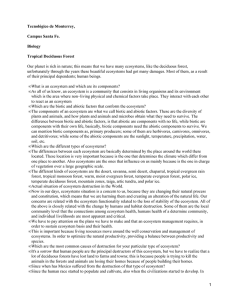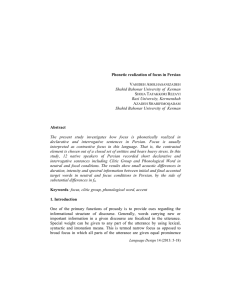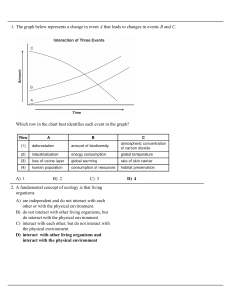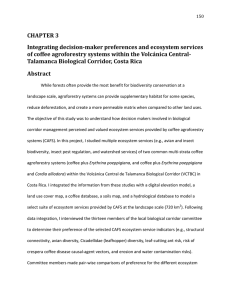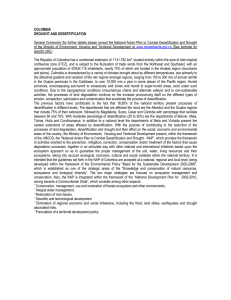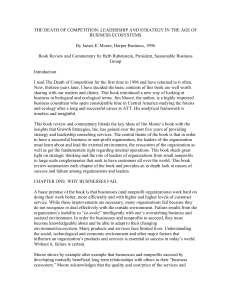Thirty-Six Persian Throw Rugs
Anuncio
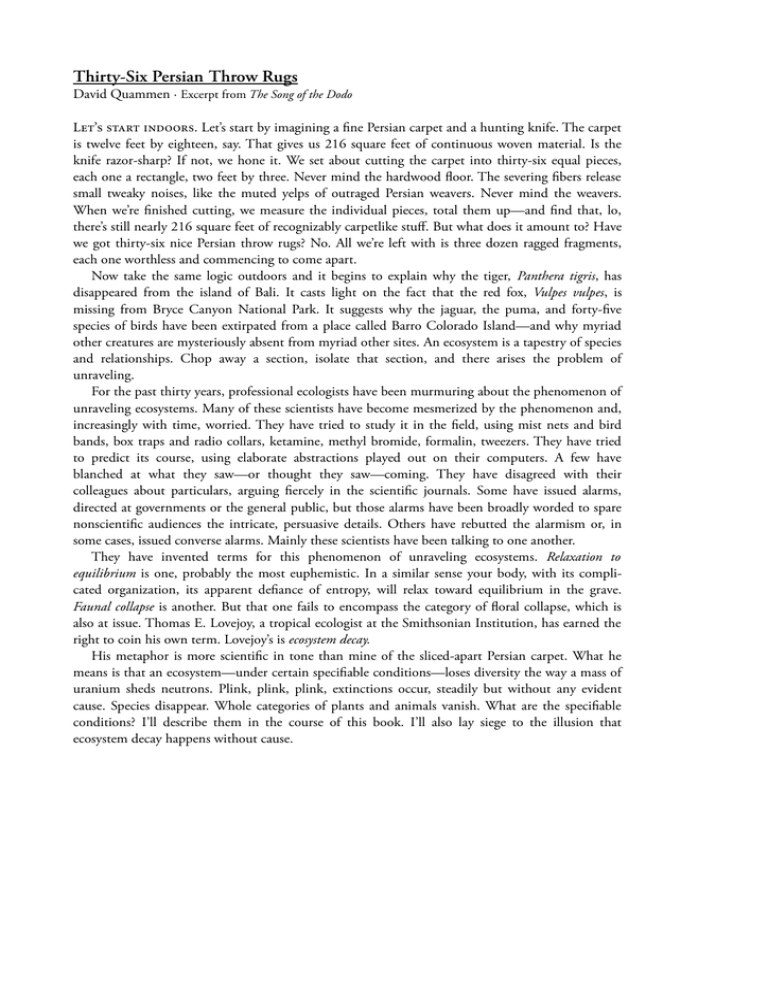
Thirty-Six Persian Throw Rugs David Quammen · Excerpt from The Song of the Dodo Let’s start indoors. Let’s start by imagining a fine Persian carpet and a hunting knife. The carpet is twelve feet by eighteen, say. That gives us 216 square feet of continuous woven material. Is the knife razor-sharp? If not, we hone it. We set about cutting the carpet into thirty-six equal pieces, each one a rectangle, two feet by three. Never mind the hardwood floor. The severing fibers release small tweaky noises, like the muted yelps of outraged Persian weavers. Never mind the weavers. When we’re finished cutting, we measure the individual pieces, total them up—and find that, lo, there’s still nearly 216 square feet of recognizably carpetlike stuff. But what does it amount to? Have we got thirty-six nice Persian throw rugs? No. All we’re left with is three dozen ragged fragments, each one worthless and commencing to come apart. Now take the same logic outdoors and it begins to explain why the tiger, Panthera tigris, has disappeared from the island of Bali. It casts light on the fact that the red fox, Vulpes vulpes, is missing from Bryce Canyon National Park. It suggests why the jaguar, the puma, and forty-five species of birds have been extirpated from a place called Barro Colorado Island—and why myriad other creatures are mysteriously absent from myriad other sites. An ecosystem is a tapestry of species and relationships. Chop away a section, isolate that section, and there arises the problem of unraveling. For the past thirty years, professional ecologists have been murmuring about the phenomenon of unraveling ecosystems. Many of these scientists have become mesmerized by the phenomenon and, increasingly with time, worried. They have tried to study it in the field, using mist nets and bird bands, box traps and radio collars, ketamine, methyl bromide, formalin, tweezers. They have tried to predict its course, using elaborate abstractions played out on their computers. A few have blanched at what they saw—or thought they saw—coming. They have disagreed with their colleagues about particulars, arguing fiercely in the scientific journals. Some have issued alarms, directed at governments or the general public, but those alarms have been broadly worded to spare nonscientific audiences the intricate, persuasive details. Others have rebutted the alarmism or, in some cases, issued converse alarms. Mainly these scientists have been talking to one another. They have invented terms for this phenomenon of unraveling ecosystems. Relaxation to equilibrium is one, probably the most euphemistic. In a similar sense your body, with its complicated organization, its apparent defiance of entropy, will relax toward equilibrium in the grave. Faunal collapse is another. But that one fails to encompass the category of floral collapse, which is also at issue. Thomas E. Lovejoy, a tropical ecologist at the Smithsonian Institution, has earned the right to coin his own term. Lovejoy’s is ecosystem decay. His metaphor is more scientific in tone than mine of the sliced-apart Persian carpet. What he means is that an ecosystem—under certain specifiable conditions—loses diversity the way a mass of uranium sheds neutrons. Plink, plink, plink, extinctions occur, steadily but without any evident cause. Species disappear. Whole categories of plants and animals vanish. What are the specifiable conditions? I’ll describe them in the course of this book. I’ll also lay siege to the illusion that ecosystem decay happens without cause.

